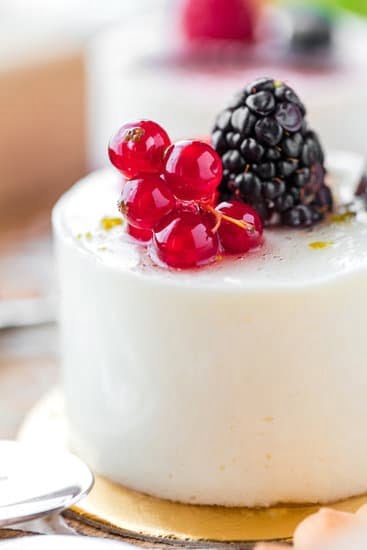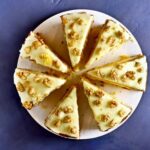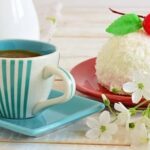Are you interested in learning the art of cake decorating? Whether you’re looking to impress your friends and family with beautifully decorated cakes or hoping to start a career in baking, this comprehensive guide on cake decorating for beginners is the perfect place to start. From understanding different types of icing and frosting to mastering basic cake decorating techniques, this article will provide you with all the essential information you need to kickstart your cake decorating journey.
When it comes to cake decorating for beginners, having the right tools and equipment is crucial. This section will explore the essential items you’ll need to create stunning designs on your cakes, from piping bags and tips to offset spatulas and turntables. Understanding the purpose of each tool and how to use them effectively will set a solid foundation for your cake decorating skills.
In addition to the tools and equipment, understanding the different types of icing and frosting is key to successful cake decorating. From buttercream and royal icing to fondant and ganache, each type has its own unique properties and uses in decorating. Learning about these variations will allow you to choose the right one for your desired design and achieve professional-looking results. So let’s dive into this exciting world of cake decorating for beginners.
Essential Tools and Equipment for Cake Decorating
Cake decorating for beginners requires the use of essential tools and equipment to achieve professional-looking results. Whether you are just starting out or looking to expand your collection, having the right tools is crucial for successful cake decorating.
Basic Tools
Some basic tools that every beginner should have in their cake decorating kit include offset spatulas, a piping bag and tips set, a turntable, a bench scraper, and an angled palette knife. These tools will help you spread frosting smoothly, create beautiful designs with icing, and ensure even and clean edges on your cakes.
Specialty Equipment
As you progress in your cake decorating journey, you may want to invest in specialty equipment such as a cake leveler, fondant smoother, flower nails for creating sugar flowers, and a pastry brush for applying simple syrups or glazes to your cakes. While these items are not essential for beginners, they can elevate your decorating skills and open up new design possibilities.
Quality Matters
When it comes to purchasing cake decorating tools and equipment, quality matters. Investing in good-quality tools will not only make your decorating process easier but also result in better-looking cakes. It’s important to choose durable materials that are easy to clean and maintain.
By having the right tools and equipment at your disposal, you can set yourself up for success in cake decorating for beginners. As you continue to hone your skills, you may find that certain tools become indispensable while others are used less frequently. Ultimately, finding the right combination of tools that work best for you will be key in achieving satisfying results with your cake decorations.
Understanding Different Types of Icing and Frosting
When it comes to cake decorating for beginners, understanding the different types of icing and frosting is essential. These elements play a significant role in the overall appearance and flavor of your cakes. As a beginner, it’s important to familiarize yourself with the various options available and their respective uses.
One of the most popular types of frosting is buttercream, which is versatile and easy to work with. It’s made from butter, powdered sugar, and flavorings such as vanilla extract. Buttercream can be used for both filling and covering cakes, as well as for creating decorative piping designs.
Another common type of icing is fondant, which yields a smooth and sleek finish. Fondant can be rolled out and draped over cakes for a flawless look, making it ideal for more formal or elaborate cake designs. While not as simple to make from scratch as buttercream, pre-made fondant is widely available for purchase.
Ganache is a rich chocolate mixture that can be used as a glaze, filling, or frosting for cakes. Made from chocolate and heavy cream, ganache offers a decadent option for cake decorating. Its glossy finish adds elegance to any cake design.
| Type of Icing/Frosting | Description |
|---|---|
| Buttercream | Versatile and easy to work with, ideal for piping designs. |
| Fondant | Yields a smooth finish and can be draped over cakes for an elegant look. |
| Ganache | A rich chocolate mixture that offers a glossy finish. |
Understanding how these different types of icing and frosting work will allow you to choose the best option based on the design and flavor you want to achieve. Experimenting with each type will help you develop your skills and find what works best for your personal style in cake decorating for beginners. Happy baking.
Basic Cake Decorating Techniques for Beginners
Cake decorating for beginners can seem daunting at first, but with the right techniques and a little practice, you can create beautiful and professional-looking cakes in no time. Here are some basic cake decorating techniques to help you get started:
- Crumb Coating: Before you start decorating your cake, it’s important to crumb coat it to create a smooth base. This involves spreading a thin layer of frosting over the entire cake to seal in any crumbs.
- Piping: Piping is a versatile technique that involves using a pastry bag and different tips to create decorative designs and borders on your cake. Practice with different piping tips to create various effects such as stars, rosettes, shells, and more.
- Using Fondant: Fondant is a popular choice for creating smooth and elegant cake decorations. Roll out the fondant and use it to cover the entire cake or create shapes and figures to adorn your creation.
Once you have mastered these basic techniques, you can experiment with more advanced methods such as painting on cakes, using edible glitter, or creating intricate sugar flowers. Remember, practice makes perfect when it comes to cake decorating for beginners.
Tips for Successful Cake Decorating
Creating beautifully decorated cakes takes time and patience. Here are some tips to help you succeed in your cake decorating endeavors:
- Start with a well-chilled cake to make it easier to handle and decorate.
- Invest in quality tools and equipment such as offset spatulas, piping bags, tips, and turntables for smoother decorating.
- Watch tutorials online or take a class to learn new techniques and gain inspiration for your next cake project.
With these basic techniques and helpful tips in mind, you’ll be well on your way to becoming a skilled cake decorator.
Step-by-Step Guide to Decorating Your First Cake
So you’ve decided to try your hand at cake decorating for beginners, and now it’s time to decorate your very first cake. Don’t worry, with the right tools, techniques, and a little bit of practice, you’ll be well on your way to creating beautiful and delicious works of art. Here’s a step-by-step guide to help you through the process.
Choose Your Cake Base
The first step in decorating your cake is selecting the type of cake you want to work with. Whether it’s a classic vanilla or rich chocolate, make sure your cake base is completely cooled before you begin decorating.
Prepare Your Icing or Frosting
Once your cake is fully cooled, it’s time to prepare your icing or frosting. Depending on the design and look you’re going for, you can use buttercream, fondant, royal icing, or ganache. Each type of icing has its own unique texture and flavor, so choose one that best suits your preferences.
Apply the Icing
Using a spatula or piping bag, evenly apply a thin layer of icing to create a smooth surface on the top and sides of the cake. This layer is known as the crumb coat and will help seal in any loose crumbs before adding the final layer of icing.
By following these simple steps and incorporating some basic cake decorating techniques for beginners, such as smoothing icing with a bench scraper or piping simple designs with a round tip, you’ll be well on your way to successfully decorating your first cake. Remember that practice makes perfect, so don’t be discouraged if things don’t turn out exactly as planned on your first try.
Keep experimenting with different designs and techniques as you continue to improve your skill in cake decorating for beginners.
Tips and Tricks for Perfecting Your Cake Decorating Skills
Once you have mastered the basic cake decorating techniques, there are several tips and tricks that can help you to perfect your skills even further. One of the most important things to remember is to always start with a smooth and level cake. This will provide a clean canvas for your decorations and prevent any lumps or bumps from showing through.
Another helpful tip is to invest in a good quality turntable for decorating your cakes. A turntable allows you to easily rotate the cake as you work, ensuring that you can reach all sides of the cake without having to awkwardly maneuver around it. This will make it much easier to achieve even and consistent decorations.
Additionally, experimenting with different piping tips and techniques can help add variety and dimension to your cake designs. Practice using different types of piping tips such as round, star, petal, and leaf tips to create various textures and patterns on your cakes. You can also try using different colors of icing or frosting to create contrast and visual interest.
For those looking for inspiration or further guidance, consider joining a local cake decorating class or online community. These resources can provide valuable feedback, tips from experienced decorators, and a supportive network of fellow beginners on their own cake decorating journey.
| Tips and Tricks | Benefits |
|---|---|
| Start with a smooth and level cake | Provides a clean canvas for decorations |
| Invest in a good quality turntable | Easily rotate the cake for even decoration |
| Experiment with different piping tips and techniques | Adds variety and dimension to designs |
| Join a local class or online community | Provides valuable feedback and support from others on the same journey |
Common Mistakes to Avoid in Cake Decorating
When starting out with cake decorating for beginners, it’s important to be aware of common mistakes that can easily be made. Avoiding these mistakes will help ensure that your cakes turn out beautifully and that you feel confident in your skills. Here are some common mistakes to watch out for:
- Not Leveling the Cake: One of the most common mistakes in cake decorating is not having a level cake to work with. When the cake layers are uneven, it can make it much more difficult to decorate and can result in a lopsided final product.
- Using Warm Frosting: Another mistake to avoid is using warm frosting on your cake. Warm frosting can cause your decorations to melt or slide off the cake, so it’s important to let your cake cool completely before applying any frosting or decorations.
- Overworking the Frosting: Overmixing or overworking your frosting can lead to a tough and unappealing texture. It’s important to mix your frosting just until smooth, as overmixing can incorporate too much air and create a bubbly or grainy texture.
Being mindful of these common mistakes in cake decorating for beginners will help set you up for success as you practice and improve your skills. By avoiding these pitfalls, you’ll be on your way to creating beautiful and delicious cakes that everyone will love.
Resources for Further Learning and Inspiration in Cake Decorating for Beginners
In conclusion, cake decorating for beginners is a fun and creative skill that can be easily mastered with the right tools and knowledge. By understanding the essential tools and equipment needed for cake decorating, as well as the different types of icing and frosting, beginners can confidently embark on their journey to creating beautifully decorated cakes. Basic techniques such as leveling, filling, crumb coating, piping, and using fondant are essential skills that beginners should practice and perfect.
Following a step-by-step guide for decorating your first cake can help build confidence and provide a sense of accomplishment. Moreover, by learning tips and tricks for perfecting your cake decorating skills, beginners can avoid common mistakes and create professional-looking cakes. It is important to remember that practice makes perfect in cake decorating, and each mistake is an opportunity to learn and improve.
For those looking to further their learning and find inspiration in cake decorating for beginners, there are countless resources available. Online tutorials, books, workshops, and community classes offer valuable information and guidance for individuals eager to enhance their skills in this art form. With dedication and perseverance, anyone can become adept at cake decorating for beginners and explore the endless possibilities for creativity and self-expression in this craft.
Frequently Asked Questions
How to Easily Decorate a Cake?
Decorating a cake can be made easy by using simple techniques like spreading a smooth layer of frosting, adding edible decorations like fresh fruits or flowers, and using piping bags to create designs.
How Do You Make a Homemade Cake Look Professional?
Making a homemade cake look professional can be achieved by paying attention to details like ensuring even layers, using a cake turntable for smooth frosting application, and incorporating professional decorating techniques such as the use of fondant or edible glitter.
What Are the Basic Cake Decorating Tools?
The basic cake decorating tools include a variety of icing tips for different designs, offset spatula for smooth frosting application, piping bags, fondant roller and smoother, cake turntable, and a bench scraper for creating clean edges on the cake. These tools are essential for both simple and intricate decorating techniques.

Welcome to our cake decorating blog! My name is Destiny Flores, and I am the proud owner of a cake decorating business named Cake Karma. Our mission is to provide delicious, beautiful cakes for all occasions. We specialize in creating custom cakes that are tailored specifically to each customer’s individual needs and tastes.





